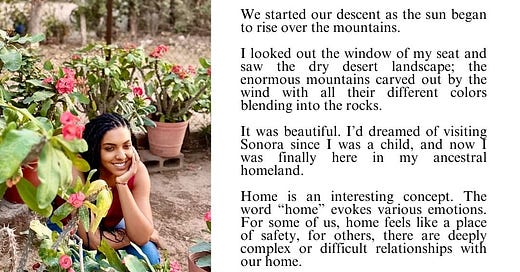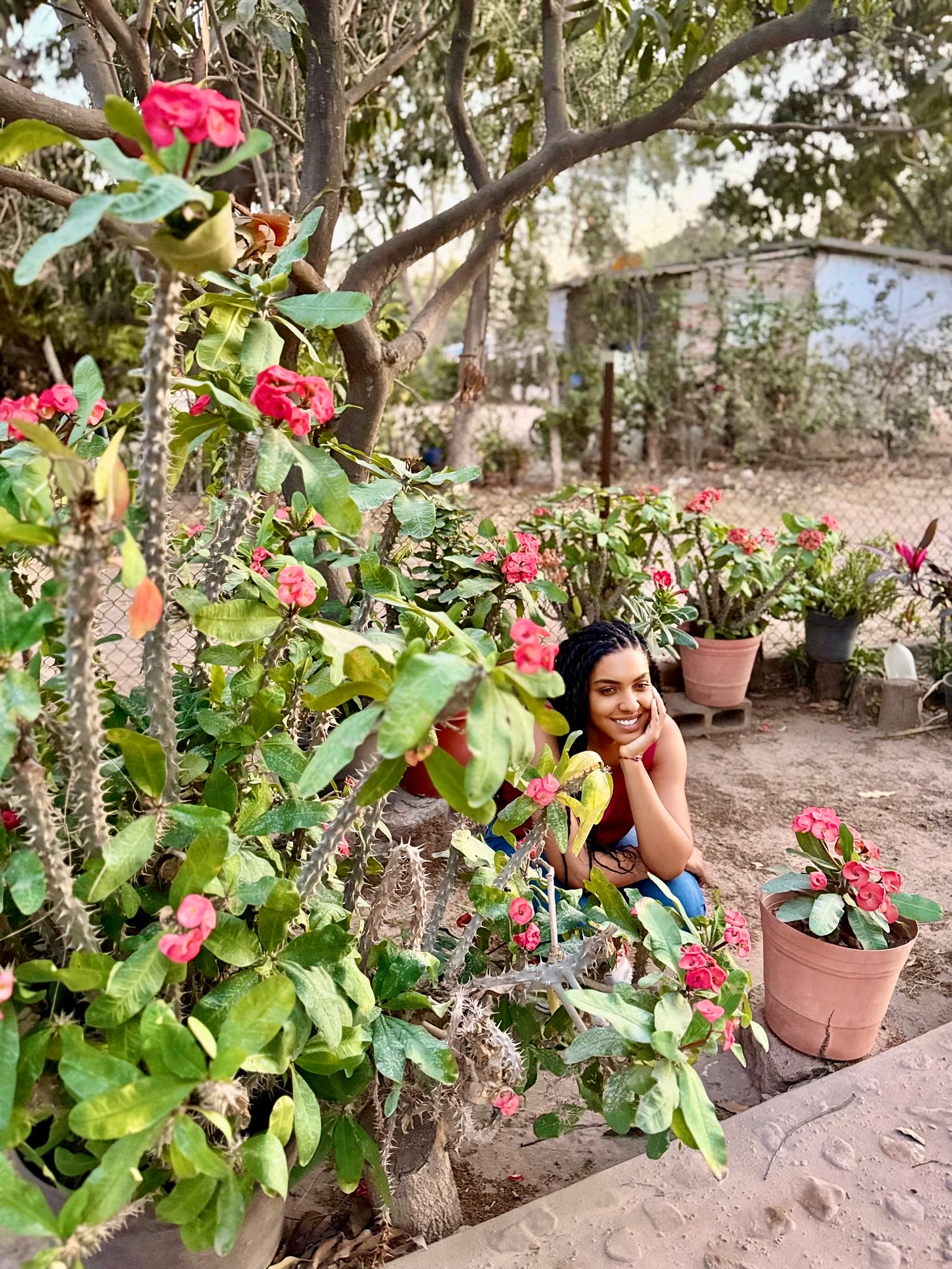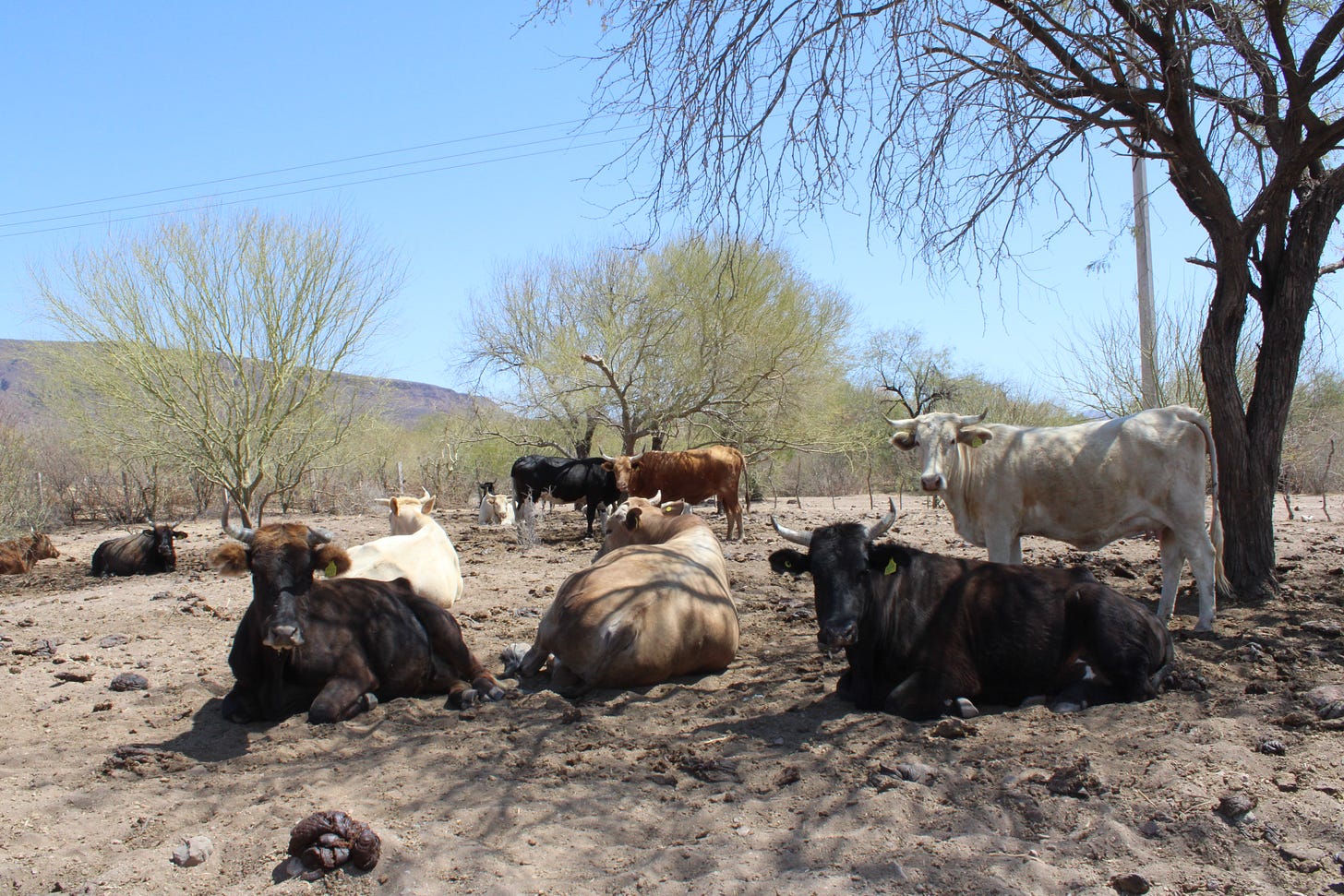We started our descent as the sun began to rise over the mountains. I looked out the window of my seat and saw the dry desert landscape; the enormous mountains carved out by the wind with all their different colors blending into the rocks. It was beautiful. As I was looking out the window I could hear my grandmother’s voicing saying, “que no se te olvide tus raíces” (don’t forget your roots). I’d dreamed of visiting Sonora since I was a child, and now I was finally here in my ancestral homeland.
Home is an interesting concept. The word “home” evokes various emotions. For some of us, home feels like a place of safety, for others, there are deeply complex or difficult relationships with our home.
As a Black American the idea of the United States as home is deeply complicated. I think of the U.S. as this complex terrain of identity for Black people because most of us don’t have direct lineage to the continent of Africa and so for many us, the American South serves as our point of reference as homeland. But as a Black and Chicana woman the idea of home becomes a bit more nuanced. My Mexican lineage gives me a homeland; a region that I can clearly name as my “home” or “motherland” (literally the land of my mother, grandmother, great-grandmothers); a land of maternal lineage.
After arriving at the airport in Obregón my family and I started our drive to Navojoa, our family's town of origin. As we made our way through the desert roads the dry heat and dust filled the air.
Navojoa is located in the southern part of Sonora. It’s a vibrant place that blends a rich tapestry of history, Indigenous culture, and desert landscape. The name “Navojoa” is derived from the Mayo language, meaning "Cactus House."
We drove past fields of cactus, desert shrubs, and artwork of the native Yaqui deer dance throughout the towns. I tried to take everything in, the sights, the scents, and the terrain. It was a place I’d never been, but it didn’t feel foreign; it oddly felt like home.
Historically, Navojoa has long been inhabited by the Mayo and Yaqui people— Indigenous communities with deep roots in the area. The Mayo (Yoeme) community continues to have a significant presence in and around Navojoa, preserving their language, customs, and traditional ceremonies. The cultural practices are often expressed through music, dance, and crafts, contributing to the town’s unique identity. Festivals such as the celebrations for Semana Santa highlight this enduring cultural blend, showcasing the resilience and vibrancy of Indigenous heritage alongside Catholic and mestizo influences.
I’ve tried to write and articulate the way going to visit Sonora made me feel but I can’t quite put my finger on it. I love the land. I love the desert terrain, the smells of mesquite and dust, the fields of cactus and wild desert plants.
Our cousin Juan Ramon gave us a little tour along the way and pointed out various fields of corn, wheat, and other crops. He shared that Sonora has been experiencing a drought for about two years now, and that the drought has been taking a toll on farm workers in the community who aren’t able to properly grow their crops. It made me reflect on the difficulties that many Mexican people experience in the wake of a growing climate crisis and the sort of social and environmental conditions that force people to leave their home in pursuit of work and opportunities.
After miles of dirt roads and cactus fields we made it to my great grandmother's campo; it's a small village of 275 inhabitants. Cattle, horses, and dogs move freely in the campo. We finally arrived at the family home I’d been hearing about for years. It wasn’t anything like how it had been described to me. I’d heard stories about a home with adobe walls, no roof or a tin roof, little to no running water, a well to bathe in, and an outhouse. My grandmother had been sending money back to her family in Navojoa for years and they were able to use her support to make some significant upgrades to the house. Our cousins consistently praised our grandmother and celebrated the significant role she plays in our family. I felt so much pride in being her granddaughter and hearing the amount of respect and appreciation they had for her. It’s amazing to witness how one brave woman can make the decision to leave her community in search of more opportunity and so many people benefit from it. I thought I understood how her choice to leave Mexico changed the trajectory of her children and grandchildren's lives, but witnessing my grandmother's impact and hearing it from our family members resonated with me on a different level.
I walked around the house to take everything in. It was a cozy, beautiful, white house with yellow and orange accents, layers of brick on the walkway, and in the yard there was still the small well that my family used to bathe with. We walked around the house and took everything in. The “Corona de Cristo” flowers planted throughout the garden, the tree house in the yard, the whimsical ways the trees bend, the ofrenda (altar) adorned with crosses and draped with rosaries, the family photos of my grandmother and great grandmother, and the aroma of freshly made menudo and tortillas cooking on a stove laid with brick. We hugged and laughed as we met our new cousins. It was a place I had never been, but with the love of my family I felt completely at home.
We left our cousin's house and headed to visit our Tía Lupana’s home to meet more family. As we arrive, Tía Lupana is standing outside. She’s a beautiful old woman in her 80’s. My mother hadn’t seen her Tía Lupana in many years. We got out of the car and she and my mother shared a long hug. “I never thought I’d see you again,” she said to my mom as she held her and they cried together. It was beautiful and emotional to watch them reunite after all this time and all the joy it brought to my mom. It reminded me of all the hard choices people of color have to make in order to search for better opportunities for their families; all the sacrifices we make and loss we experience. We all shared more hugs and tears as we’re introduced to our tía, more cousins, and other family members then head to the backyard to have another meal; this time it’s tortillas, asada, and some rice- it’s easily the best rice I’ve ever tasted.
Two plates of rice later, I went inside the house to see more family photos. On the wall by the door, I noticed a hand drum and a black- and- white mask that resembles a wolf or dog's head, made of some sort of animal skin and what I believe to be horse hair. My cousin explains that it’s a mask he wears when he’s dancing. I'm curious and I want to ask more about it, but my Spanish isn’t good enough to ask thoughtful follow up questions. Little did I know, the mask I saw in the house would later end up being one of the most impactful pieces of my trip.
We’d been traveling all day and were ready to settle down, but before we went to settle in we made one last stop to our family owned Tortilleria called “El Tanichi.” Tanichi is an old slang/colloquialism used in the Yaqui and Mayo language to refer to a small neighborhood store. I was pleasantly surprised to learn that our cousins owned a Tortilleria in Basconcobe and I was looking forward to checking it out. We arrived at a cute little store painted all yellow with a sign reading “Super Tortilleria El Tanichi” on the front. The store was a great little market filled with spices, fresh pan, cotija cheeses, and homemade tortillas being made on a large flat grill in the back. We would come back to the store regularly throughout our trip, but for now, we were just picking up some fresh ingredients for dinner. That evening, we sat outside together in the warm evening desert air and enjoyed homemade carne asada with fresh guacamole and more rice. We laughed and heard stories till it was time to get some rest.
The next day we set off with our cousin Juan Ramon to visit some other towns and explore some family history. We drive for about two hours through miles of cactus fields and dirt roads to a little pueblo called Veranitos. Veranitos was the original pueblo my great grandmother's family came from before they left for Campo León. We arrived at a small home and were greeted by the owner. My cousin Juan Ramon explained who we were and that we’re looking for some relatives. The man kindly directed us a few more miles up the road and said we’ll find the people we’re looking for. After a few miles and more rough dirt road, we found their home. It was a small home with an outhouse in the back of the house, and a bit of tin roofing. Our new relatives graciously welcomed us in and we sat and chatted for a while. They had beautiful brown skin and indigenous features. They shared with us a little bit about our family history in Veranitos and how they are the last ones still living in the area.
After meeting our new family members we set off to explore more of the town. In Veranitos we decided to explore a church in the center of the town square. It was a beautiful old catholic church adorned with statues of catholic saints, old wooden pews, high vaulted ceilings, and a large altar in the center covered with flowers and offerings. The priest came to greet us and asked, “Are you American?” We reluctantly said “yes” because we were aware of the U.S and its global reputation. The priest began to share some of his thoughts and warned us that “Trump will be the downfall of your country,” I don’t disagree; it's a sentiment many people back home in the U.S. are currently wrangling with. As an American visiting Mexico, there was a slight sense of discomfort and even embarrassment, and in that moment I wished we could just blend in. In a country like the U.S. that promises so much opportunity and prides itself on its democratic ideas and notions of freedom yet criminalizes so many Latinos for their very existence, where is the American sense of accountability to the collective and to the global community?
We end our afternoon adventure and head back toward Navojoa to enjoy the rest of our day and relax, but there would be much more to experience and reflect on in the days to come.











Very Endearing article